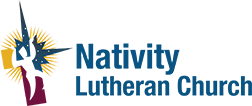
Week 3: Exploring the Honorable Harvest and Indigenous Connection to the Land in Braiding Sweetgrass
Welcome back to our discussion on the book Braiding Sweetgrass by Robin Wall Kimmerer. This week, we delve into week three with the theme of Picking Sweetgrass. We begin on a journey through the author’s personal experiences and insights on the importance of the honorable harvest and becoming Indigenous to place.
The Honorable Harvest is a concept deeply rooted in Indigenous traditions, and it treats all living things as “a who” rather than “an it.” The idea is that by acknowledging the fact that everything has a spirit or life force, we will naturally treat them with respect. I believe this is true because it is easy to detach yourself from killing or harming something when you view it as a lifeless object. However, if you acknowledge that everything is a being, you are less likely to harm it unless it is essential.
In the footsteps of Nanabozho: Becoming Indigenous to Place tackles the idea of feeling rooted to a particular location. I personally feel rooted to my hometown because I have spent most of my life there. However, I have also felt a connection to places where I spent a lot of meaningful time, such as my college town and the campsite where I first felt a deep appreciation for nature. I feel that connecting with a place requires spending time in nature and seeing how everything works together. It may also involve learning the stories and history of the land.
The Sound of Silverbells focuses on the belief that the land is a teacher. Kimmerer shares how she learned how to be silent and listen to the environment while harvesting sweetgrass from her elder. Nature is a great teacher because it teaches us patience, resilience, and interdependence. By observing the land and identifying patterns, we can learn important lessons that can apply to our own lives.
Sitting in a Circle tackles the idea of solidity not being real. Kimmerer points out that everything in the universe is in motion, and the energy never disappears. This idea aligns with the concept of interdependence. We are all connected through the air we breathe, the water we drink, and the environment we inhabit. Everything is in motion, and we have to recognize that we are all part of something greater than ourselves.
Finally, Burning Cascade Head explores significant ceremonies that help people focus their attention on a specific goal. This is particularly relevant in today’s fast-paced world. Taking time to celebrate milestones and reflect on important things helps with inner clarity and peace.
The themes discussed in week three of our book read offer valuable insights into the importance of the honorable harvest, becoming Indigenous to the place, and the land as a teacher. It is essential to realize that everything is connected, and we must treat all living things with respect. By spending time in nature and learning from it, we can enrich our lives on a spiritual level. I hope this discussion has stimulated your mind and encouraged you to take a moment to reflect on your connection with the land and other living things. Join us next week as we dive into our final chapters. Consider these questions below to guide you during your reading:
The Honorable Harvest
- Do you agree with the idea that killing a “who” evokes a different response from humans than killing an “it?”
In the footsteps of nanabozho: Becoming Indigenous to Place
- Do you feel rooted to any particular place?
- If so, what makes you feel a deeper connection with the land, and how did you arrive at that feeling?
- If not, what obstacles do you face in feeling part of your land?
- Do you feel rooted to any particular place?
The Sound of Silverbells
- Do you believe in land as a teacher? Why or why not?
Sitting in a Circle
- What do you think about the idea that solidity is not real?
Burning Cascade Head
- “What significant ceremonies do you participate in that help focus your attention into a specific goal?”


